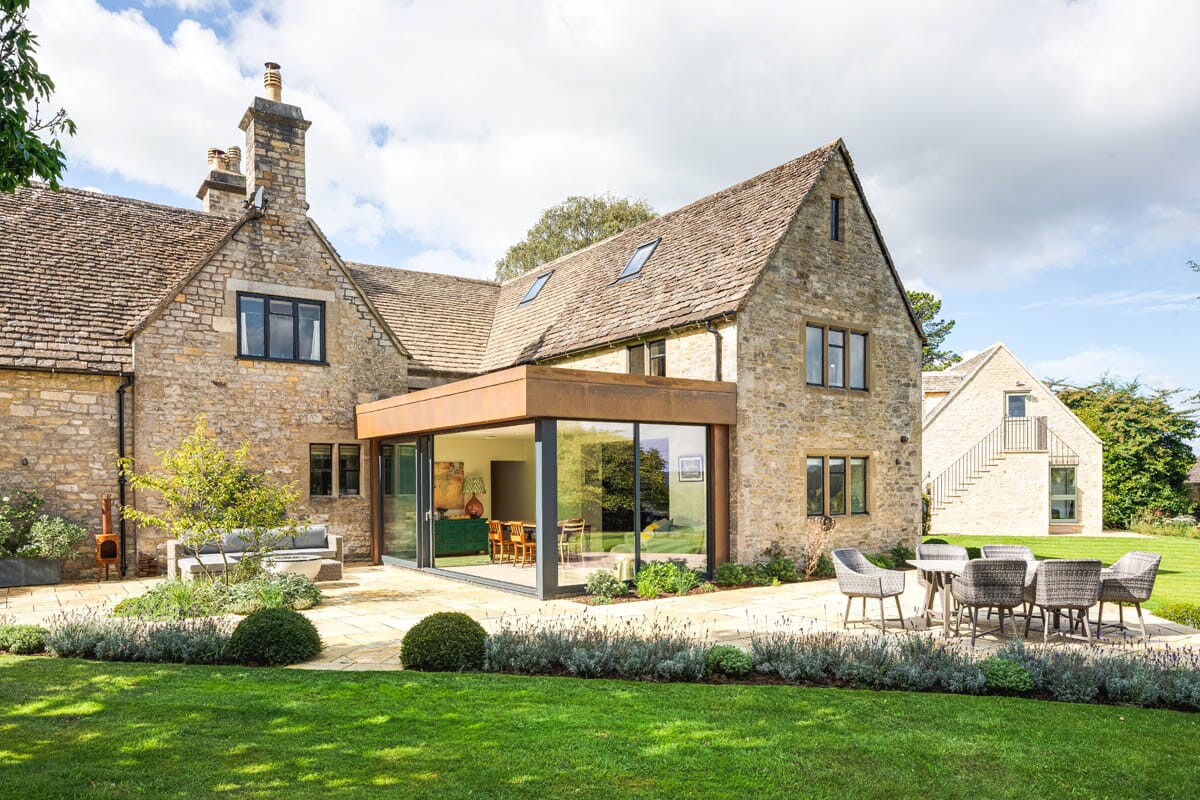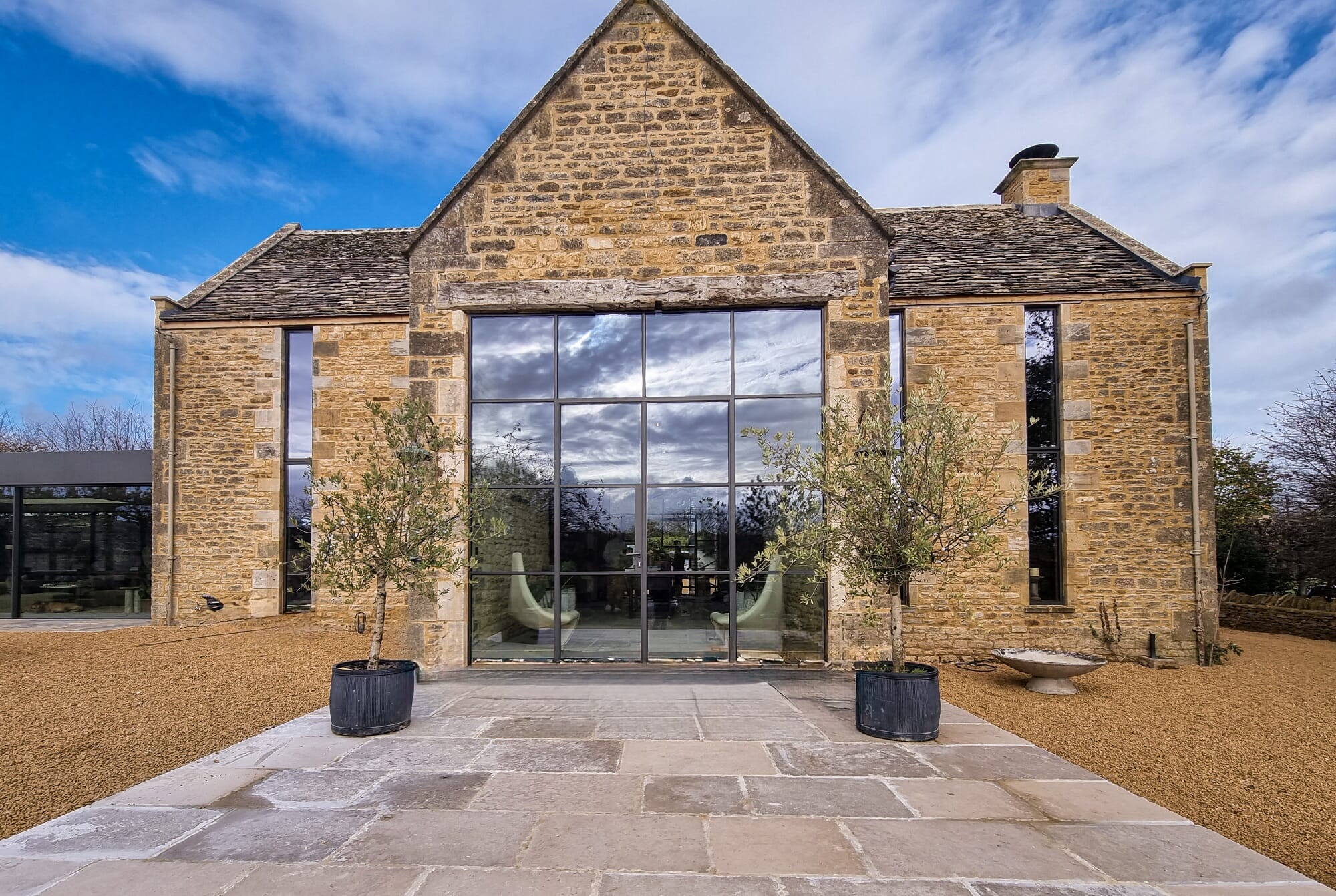
A Guide to Glazing Applications in Listed Buildings
Discover how modern glazing solutions for listed buildings can enhance period properties while meeting conservation and planning regulations...
Understanding Listed Buildings and Their Challenges
Listed buildings in the UK are recognised for their historical or architectural importance. Their protection is governed by strict planning regulations that aim to preserve their original character while allowing for sensitive modernisation. When it comes to glazing applications in listed buildings, careful planning and specialist expertise are required to ensure compliance with heritage guidelines while also enhancing the property’s aesthetics and the home-owner’s comfort.
Grades of Listed Buildings
In the UK, listed buildings fall into three main categories:
- Grade I – Buildings of exceptional interest (only 2.5% of listed buildings fall into this category).
- Grade II* – Particularly important buildings of more than special interest.
- Grade II – Buildings of national importance and special interest (the majority of listed buildings).
Each grade comes with specific requirements regarding alterations, including the installation of new glazing solutions. Planners and conservation officers assess applications on a case-by-case basis, ensuring that changes are sympathetic to the building’s character.
What Planners Look for in Listed Building Glazing Applications
One of the key principles in listed building glazing applications is making a clear distinction between old and new. Planners often favour designs that are obviously modern interventions rather than those that try to mimic traditional elements. This is where glass links and glass box extensions play a crucial role.
- Glass Box Extensions: These are modern additions that contrast with the existing historic structure, offering a visually unobtrusive solution while maintaining the integrity of the original building.
- Glass Links: Used to connect different parts of a property, glass links provide a sensitive way to extend listed buildings without overwhelming their historic features.

Bespoke Glazing Solutions for Listed Buildings
At Cotswold Windows, we provide bespoke structural glazing solutions that respect the historical integrity of listed properties while offering modern performance benefits. Our projects, including a bespoke glazing application at Shipton Pool House and the Sky-Frame glass box extension at Nethercote (pictured), showcase how modern glazing can seamlessly integrate into heritage buildings through expert design and craftsmanship. We also supplied and fitted glazing for the refurbishment and extension of a Grade II listed Arts & Crafts property in Minchinhampton (main image), which included a contemporary pool pavilion and stunning copper box extension.
Bespoke Structural Glazing Systems
Our custom-made structural glazing solutions incorporate:
- Thermally broken designs to enhance energy efficiency.
- Bespoke aluminium pressings for a clean, precise finish.
- Bonded and stepped glass to create seamless, elegant extensions.
- Spider fittings and bolted glass for structurally secure installations.
These elements allow for the creation of visually striking, highly functional glazing solutions that comply with conservation guidelines while offering modern performance benefits.

Replacing Windows in a Listed Building: What You Need to Know
Replacing windows in a listed building is a complex process that requires careful planning and adherence to conservation principles. Customers will need to engage with an architect or planning specialist as well as a glazing specialist such as Cotswold Windows.
Can You Have Double Glazing in a Listed Building?
One of the most common questions from homeowners is, can you have double glazing in a listed building? The answer depends on the specific regulations governing the property and the proposed glazing solution. Traditional double glazing is often not permissible due to its impact on the building’s appearance. Slim-profile double glazing in listed buildings is preferred because it maintains the original aesthetic while providing thermal efficiency. This type of glazing replicates historic sightlines while significantly improving energy performance. Secondary glazing can also be an option.
Steel-Framed Windows in Listed Buildings
Steel-framed glazing was an important design aesthetic in the early 20th century and is often seen in listed buildings of that era. To meet today’s strict energy performance targets, MHB steel windows and doors (pictured above) are particularly suited for heritage applications, offering:
- Ultra-slim sightlines that closely match original steel window designs.
- High thermal performance due to innovative thermal break technology.
- Proven use in countless historic renovations, including Anne Frank House in Amsterdam and the Bauhaus building in Dessau, Germany.
Technical Considerations for Glazing in Listed Buildings
Each listed building glazing project is unique, requiring tailored solutions that align with planning requirements and the client brief. At Cotswold Windows, we work closely with architects and conservation officers to ensure that our glazing solutions meet aesthetic, functional, and regulatory criteria. From specifying specialist roof glazing that meets safety and weatherproofing criteria to glazing solutions that satisfy performance without compromising the building’s character, we offer bespoke glazing solutions for each individual application.
Supporting Architects and Homeowners Through the Design Process
Navigating the complexities of glazing applications in listed buildings requires expert guidance. While the planning application process remains the responsibility of the homeowner or architect, Cotswold Windows offers comprehensive support throughout the design and specification phases.
We assist with:
- Technical detailing to meet conservation requirements.
- Bespoke design solutions tailored to specific architectural challenges.
- Collaboration with conservation officers to ensure a smooth approval process.
Combine Tradition with Innovation at Cotswold Windows
Glazing applications in listed buildings require a careful balance between historical preservation and modern performance. By working with specialist glazing providers like Cotswold Windows, architects and homeowners can achieve sensitive yet innovative solutions that enhance both the functionality and visual appeal of heritage properties. Whether incorporating bespoke glass box extensions, glass links, or MHB Steel-framed windows and doors, our expertise ensures that each project meets the highest standards of craftsmanship, compliance, and energy efficiency. Get in touch with us to discuss your heritage project.
